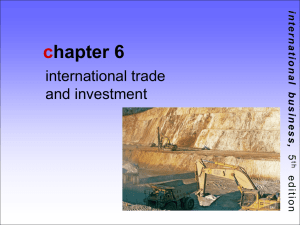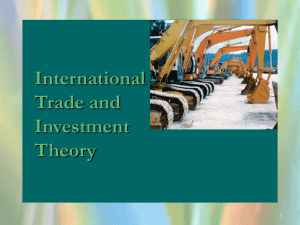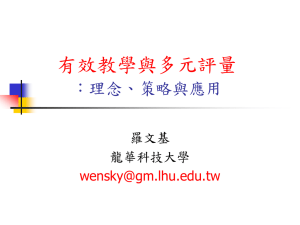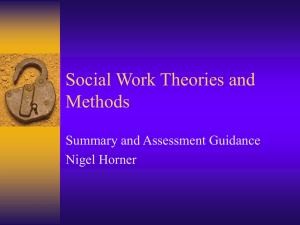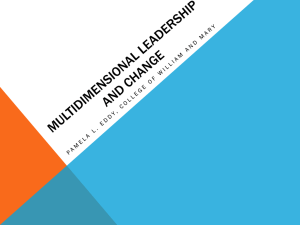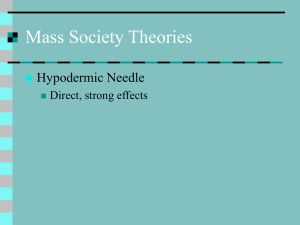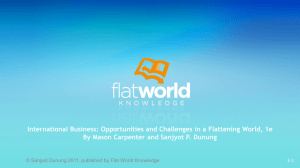International Trade & Investment Theory: Presentation
advertisement
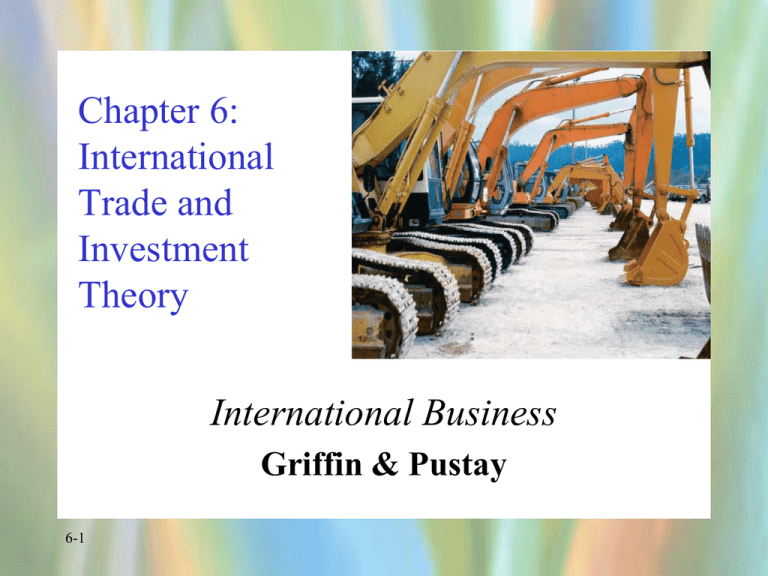
Chapter 6: International Trade and Investment Theory International Business Griffin & Pustay 6-1 Chapter Objectives Why should we study Trade Theories? Types of Trade Theories Overview of International Investment International Investment theory Factors influencing investments 6-2 International Trade Trade: voluntary exchange of goods, services, assets, or money between one person or organization and another. International trade: trade between residents of two countries. 6-3 Significance of Trade Theories Governments use these theories when they design policies they hope will benefit their industries and citizens. Managers use them to identify the promising markets and profitable internationalization strategies. 6-4 Trade Theories Classical Country-Based Trade Theories Modern Firm-Based Trade Theories 6-5 Classical Country-Based Trade Theories Developed in sixteenth century, focused on the individual country in examining pattern of export and import. These theories are particularly useful for describing trade in commodities , which are standardized, undifferentiated goods, that are typically bought on the basis of price rather than brand name. 6-6 Contd. Classical Country-Based Trade Theories 6-7 Mercantilism Absolute Advantage Comparative Advantage Relative Factor Endowments Contd. Mercantilism A country’s wealth is measured by its holdings of gold and silver A country’s goal should be to enlarge holdings of gold and silver by – Promoting exports – Discouraging imports 6-8 Contd. Disadvantages of Mercantilism Weakens the country because it robs individuals of the ability – To trade freely – To benefit from voluntary exchanges Forces countries to produce products it would otherwise not in order to minimize imports 6-9 Absolute Advantage Proposed by Adam Smith. Export those goods and services for which a country is more productive than other countries Import those goods and services for which other countries are more productive than it is 6-10 The Theory of Absolute Advantage: An Example OUTPUT PER HOUR OF LABOR France Japan 6-11 Wine 2 1 Clock radios 3 5 Comparative Advantage Developed by David Ricardo in 1817. Produce and export those goods and services for which it is relatively more productive than other countries Import those goods and services for which other countries are relatively more productive than it is 6-12 The Theory of Comparative Advantage: An Example OUTPUT PER HOUR OF LABOR France Japan 6-13 Wine 4 1 Clock radios 6 5 Relative Factor Endowments Heckscher-Ohlin Theory What determines the products for which a country will have a comparative advantage? – Factor endowments vary among countries – Goods differ according to the types of factors that are used to produce them 6-14 Relative Factor Endowments A country will have a comparative advantage in producing products that intensively use resources (factors of production) it has in abundance – China: labor – Saudi Arabia: oil – Argentina: wheat 6-15 Modern Firm-Based Trade Theories Firm based were developed after World War II and are used to describe trade patterns of differentiated goods, for which brand name is an important component of the customer’s purchase decision. 6-16 Modern Firm-Based Trade Theories Country Similarity Theory Product Life Cycle Theory Global Strategic Rivalry Theory Porter’s National Competitive Advantage 6-17 Country Similarity Theory Country similarity theory is particularly useful in explaining trade in differentiated goods for which brand names and product reputation play an important role in consumer decision making. Explains the phenomenon of intraindustry trade – Trade between two countries of goods produced by the same industry • Japan exports Toyotas to Germany • Germany exports BMWs to Japan 6-18 Country Similarity Theory Trade results from similarities of preferences among consumers in countries that are at the same stage of economic development Most trade in manufactured goods should be between countries with similar per capita incomes. Firms initially manufacture goods to satisfy the domestic market. As they explore exporting opportunities, they discover that the most promising foreign markets are in countries where consumer preferences resembles to their own domestic market. 6-19 Product Life Cycle Theory Product life cycle theory, which originated in the marketing field to describe the evolution of marketing strategies as a product matures. This theory states that location of production of certain kinds of products shifts as they go through their stages of life cycle, which consists of– New product – Maturing product – Standardized product 6-20 Product Life Cycle Theory 6-21 New Product Stage: Innovation in response to observed needs in the domestic market. Limited export by the innovating country. Maturing Product stage: Demand for the product expands dramatically as consumers recognize its value. So, increase in production to satisfy both domestic and foreign market. Domestic and foreign competition begins to emerge. Product Life Cycle Theory Standardized Product Stage: The market for the product stabilizes. Firms are pressured to lower their manufacturing costs as much as possible by shifting to countries where labour costs are lower. Product begins to be imported in the innovative country. 6-22 Global Strategic Rivalry Theory Firms struggle to develop sustainable competitive advantage Advantage provides ability to dominate global marketplace Focus: strategic decisions firms use to compete internationally 6-23 Global Strategic Rivalry Theory 6-24 Owning intellectual property rights Investing in research and development Achieving economies of scale or scope Exploiting the experience curve Porter’s National Competitive Advantage Success in trade comes from the interaction of four country and firm specific elements – – – – 6-25 Factor conditions Demand conditions Related and supporting industries Firm strategy, structure, and rivalry Porter’s Diamond of National Competitive Advantage Firm Strategy, Structure, and Rivalry Factor Conditions Demand Conditions Related and Supporting Industries 6-26 Theories of International Trade Country-Based Theories Country is unit of analysis Emerged prior to WWII Developed by economists Explain interindustry trade Include – Mercantilism – Absolute advantage – Comparative advantage – Relative factor endowments 6-27 Firm-Based Theories Firm is unit of analysis Emerged after WWII Developed by business school professors Explain intraindustry trade Include – Country similarity theory – Product life cycle – Global strategic rivalry – National competitive advantage International Investment Theories Ownership Advantages Internalization Dunning’s Eclectic Theory 6-28 Ownership Advantages A firm owning a valuable asset that creates a competitive advantage domestically can use that advantage to penetrate foreign markets through FDI Why FDI and not other methods? 6-29 Internalization Theory FDI is more likely to occur when transaction costs with a second firm are high Transaction costs: costs associated with negotiating, monitoring, and enforcing a contract 6-30 Dunning’s Eclectic Theory FDI reflects both international business activity and business activity internal to the firm 3 conditions for FDI – Ownership advantage – Location advantage – Internalization advantage 6-31
